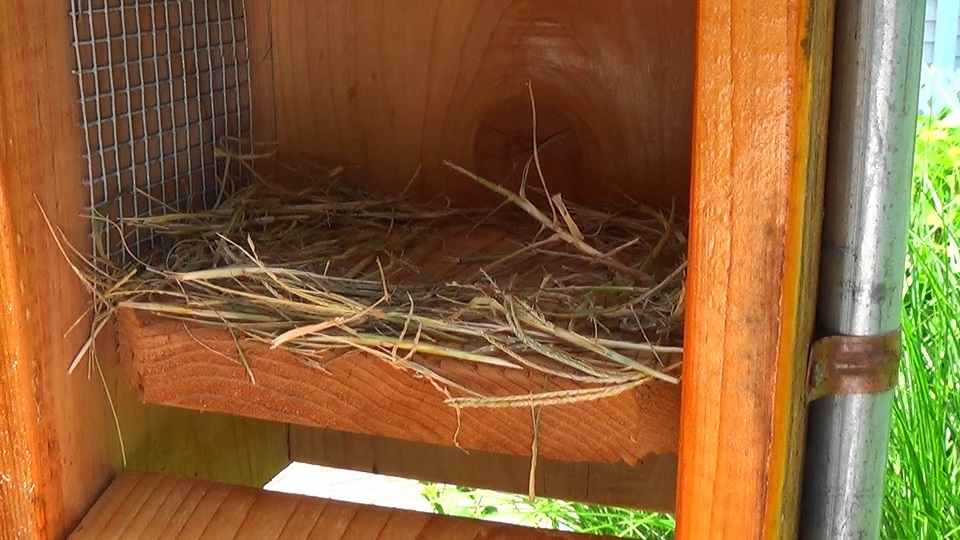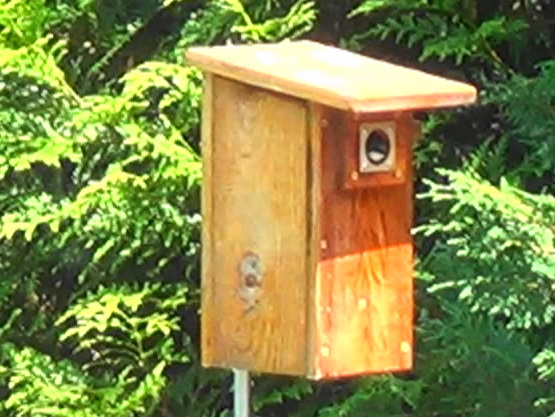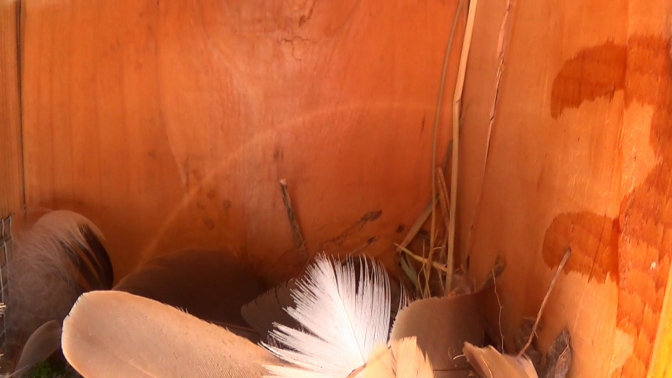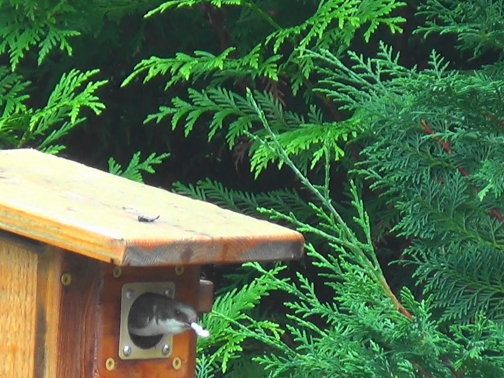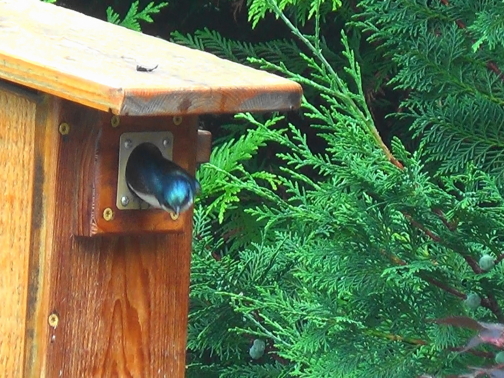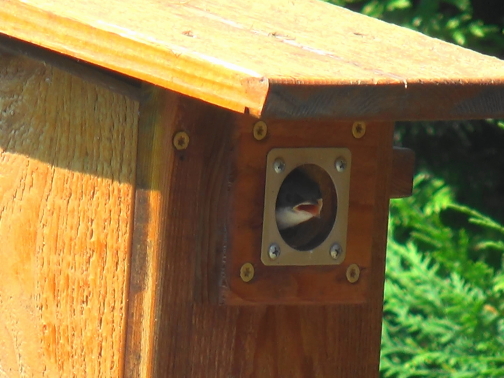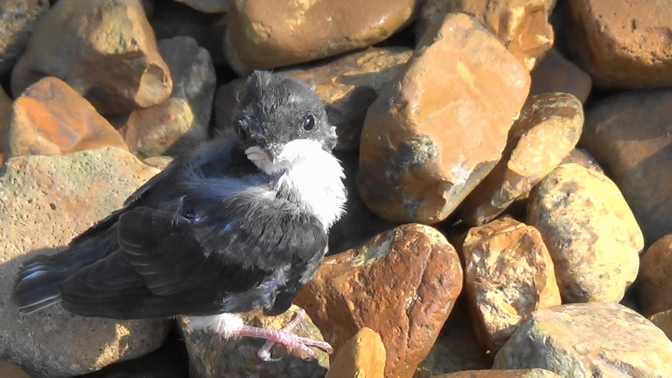When The Swallows Come Back
Chronicles from summer 2020
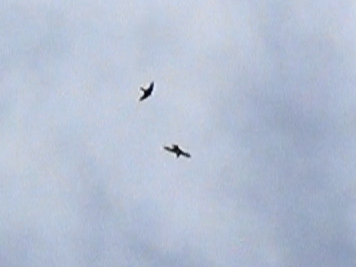
The Tufties were gone by mid-May. Fledging was a full-fledged success—every chick had safely left the birdhouse to face the big, wide world. The box was empty and nearly spotless; the tufted titmouse parents had done a stellar job tidying up after their brood.
Soon after, new visitors arrived. A pair of wrens began building a nest atop the old one, and a curious bluebird stopped by to inspect the property. But just as things seemed to be starting anew, the activity came to a sudden halt.
The reason? Ants.
Swarms of them had invaded the birdhouse, crawling up through the hollow center of the pole stand and infesting both the old titmouse nest and the new wren construction. It was time for some bird-lordly intervention.
I removed the nests—both the Tufties’ and the wrens’—sealed the hollow pole, and scrubbed the birdhouse inside and out with boiling water. Once clean and dry, the house was ready for new tenants.
The very next day, May 25th, I opened the box to check for any lingering invaders. No ants. Instead, I found a fresh base of dried vegetation—already the foundation for a brand-new nest.
And that’s where the story of True Blue and Mulan begins.
The reason? Ants.
Swarms of them had invaded the birdhouse, crawling up through the hollow center of the pole stand and infesting both the old titmouse nest and the new wren construction. It was time for some bird-lordly intervention.
I removed the nests—both the Tufties’ and the wrens’—sealed the hollow pole, and scrubbed the birdhouse inside and out with boiling water. Once clean and dry, the house was ready for new tenants.
The very next day, May 25th, I opened the box to check for any lingering invaders. No ants. Instead, I found a fresh base of dried vegetation—already the foundation for a brand-new nest.
And that’s where the story of True Blue and Mulan begins.
Soon it became clear who had claimed the birdhouse—a pair of tree swallows.
The blue-feathered male stood watch, vigilant and proud,
as his mate gathered dried grasses and worked tirelessly to build their nest.
Meet Mulan—so named because she would soon prove herself a fearless princess of the skies.
| May 26, early afternoon | May 26, late afternoon |
|---|---|
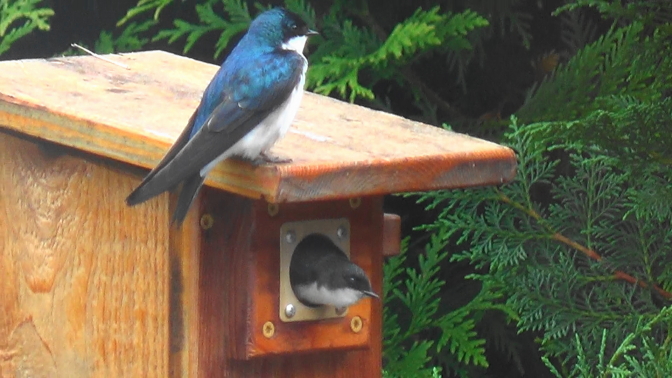
|
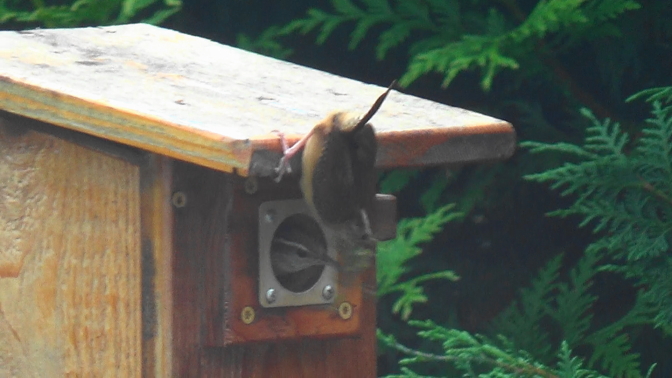
|
Around here, tree swallows typically begin nesting in April or early May.
So this pair’s late-May activity sparked curiosity. Were they late bloomers?
A young couple who met after their long flight from southern lands?
Had they struggled to secure a box earlier in the season?
Or perhaps their first nesting attempt had failed.
Whatever their story, one could only hope that this time, everything would go just right.
A little over 3 weeks after after claiming the birdhouse, swallows disappeared. It was June 17.
The nest was completely finished, topped with lots of geese, duck and gull feathers brought from the lake. Was there something under the feathers? Likely, yes. So I promptly closed the box. The swallows were back later that day. A few days later it was obvious, they had new additions to their family!
Both parents were tirelessly devoted—darting in and out of the nest box with beaks full of insects, then just as swiftly carrying away neat white fecal sacs to keep the nest clean. Before long, the chicks began perching at the opening of the birdhouse, wide-mouthed and insatiable, waiting for their next meal. By the 2nd of July,
the nest was alive with motion, fluttering wings, and eager calls.
| July 2 | July 2 |
|---|---|
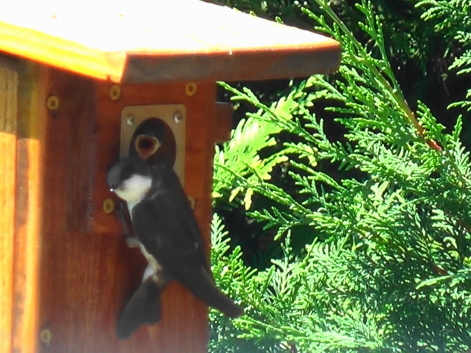 |
Baby swallows begin peeking out of the nest and practicing their “hole-hogging” skills about a week before
fledging—jostling for the best spot at the entrance to catch the next meal.
The incubation period for tree swallows is typically 14 to 15 days,
though it can range from 11 to 19.
Nest construction usually takes a couple of weeks,
but if materials are abundant, they can finish in as little as five days.
Once hatched, the chicks are generally ready to fledge at around 18 to 22 days, though some may take flight as early as day 15 or as late as 25.
Based on everything I’d observed, if the stars aligned, I thought the first chick might fledge by the end of the week. But I also knew a few more days—or even another full week in the nest—would help them grow stronger. So, I stopped using the side door near the birdbox.
No one should startle the babies at this stage.
But the babies had their own plan.
They left early. All of them!
They left early. All of them!
| July 3 | July 3 |
|---|---|
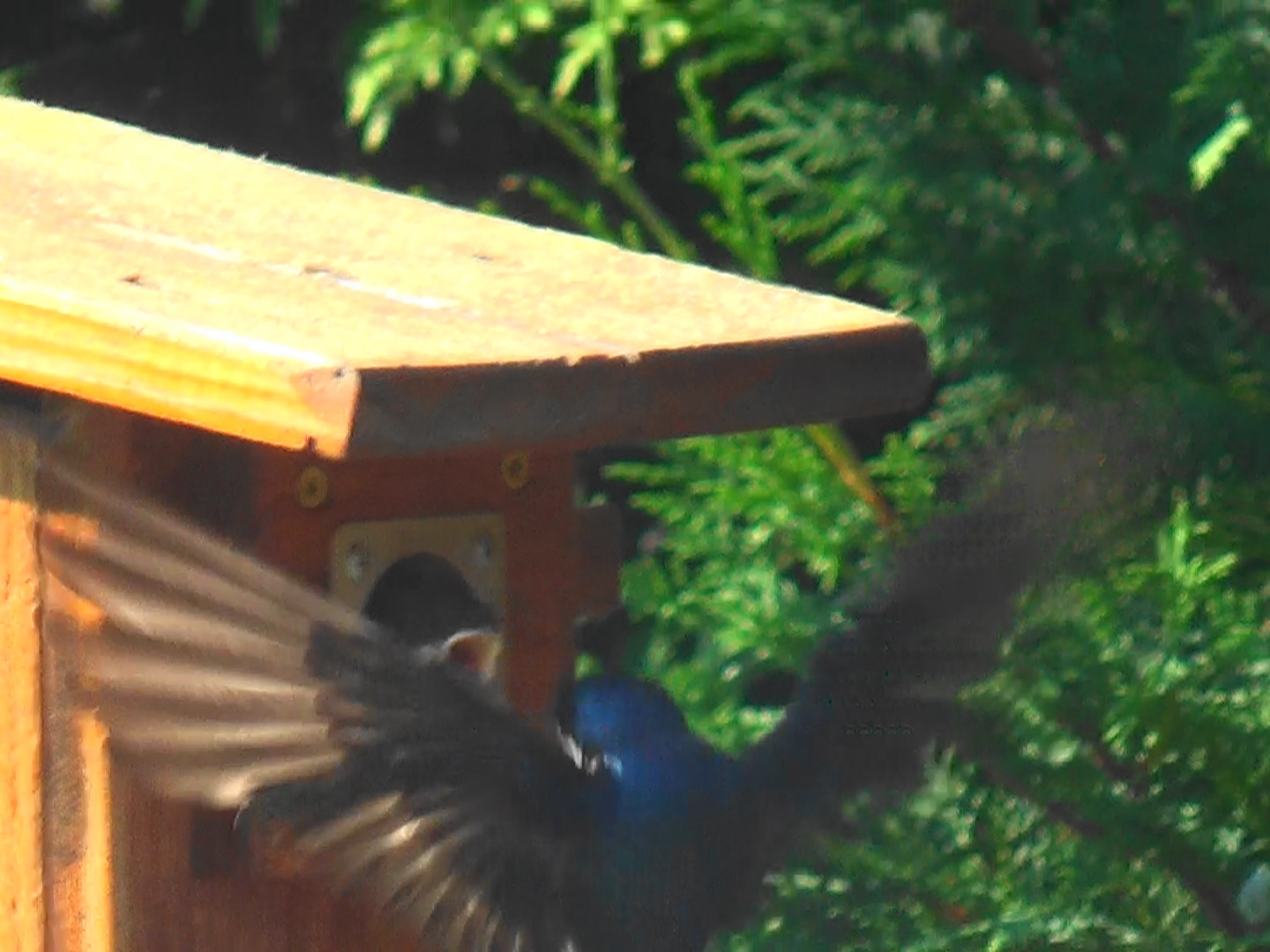 |
I heard a lot of chirps and "whirrs" on July 3rd. It was about 4pm when I finally realized what happened. A prematurely fledged chick was sitting on the rocks unable to fly. Meet Bit. Poor little Bit. He was a healthy little chick and a great hopper, but his tiny little wings were not ready for a flight. I gave him a lift - quickly put him on the palm of my hand and placed the hand next to the opening of the bird house. He promptly hopped into his house. And in a moment True Blue was there feeding the chick!
Little Bit closed his eyes from happiness, digesting his meal after such a difficult day.
Next day everything was very quiet.
He was gone. Hopefully this time he was more successful. Later as I walked in the garden and made a step towards the bird house from another corner of the yard, Mulan flew towards me, made a few circles around my head as I changed my direction, and went back to her tree. I was not sure why, but thought that little Bit must be OK. She doesn't want me to be near the bird house so I won't go there. Later I realized what was happening. Another chick that also flew prematurely was still on the ground. 3 days later I saw little Bib. The wings were a little larger than Bit's, but Bib
seemed to be trapped in a groove. Or was it?
They say it's normal for baby chicks to flutter on the ground with parental encouragement before they get airborne. Bib was on the ground for 3 days. It could be still OK, his parents were not abondoning him. As he saw me, he squized into a narrow but deep hole between bricks. Perhaps I was not supposed to do it, but I removed the bricks to take him out. The chick was very weak. I placed him in the palm of my hand, on his feet, and offered him to hop into the birdhouse. But Bib did not seem to want it.
| July 6 - parents | July 6 - parents and a chick |
|---|---|
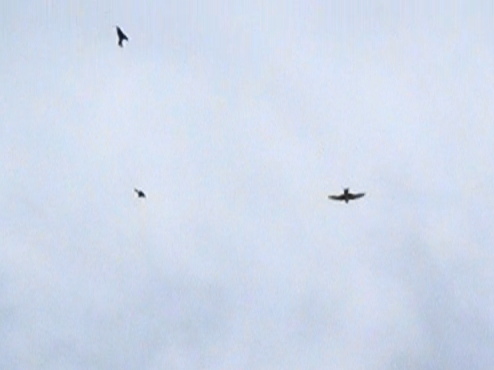 |
I was standing with the bird in the palm of my hand thinking what to do. Suddenly the chick started flying as his mom, Mulan, dived down flying along his side! Unfortunately, Bib still could not fly up so he landed under the tree, near Chris. Mulan attacked Chris, then flew towards me telling me to leave. And we left.
Both parents were flying in the sky guarding the baby. At some point they were joined by another swallow. Was it their oldest chick?
In late summer swallows stream to coastal marshes where they form larger and larger flocks preparing for their long journey.
Goodbye Swallows! I'll wait for you next Spring.
